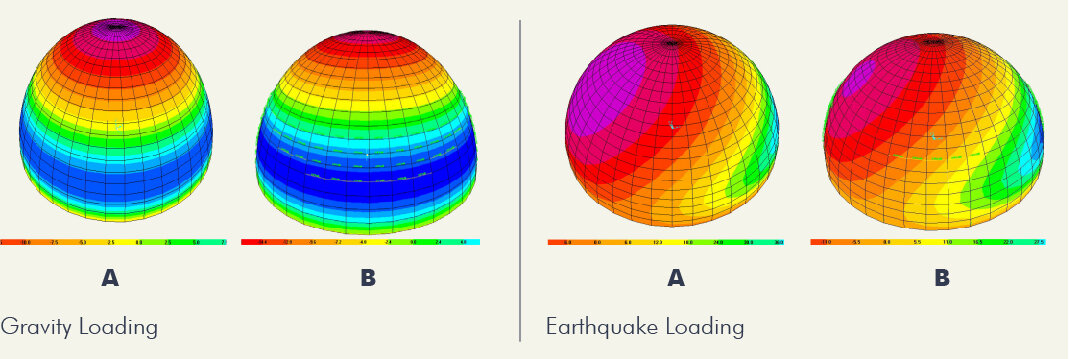
Yavuz Selim Mosque
Yavuz Selim Mosque. Photo Courtesy of Wikimedia Commons.
Solutions Used:
CARBON-FIBER REINFORCED POLYMER (CFRP)
BACKGROUND
The Yavuz Selim Mosque is a 16th century monumental masonry structure from the Ottoman Empire. It is located on the Fifth Hill and is the second oldest imperial mosque still existing in Istanbul. It has been speculated that its design can be attributed to Mimar Sinan, a well-known architect of that era, but this has not been confirmed. Like many historic mosques in Istanbul, the Yavuz Selim Mosque consists of a symmetrical brick and lime mortar structure, with eighteen small brick domes and a main dome that is 25 meters in diameter.
Monumental masonry mosques are a significant component of Turkey’s heritage, and as such are a conservation priority and one required significant government oversight and input from architectural historians. Historic ornamentation is particularly difficult to preserve. This mosque features distinctive examples of Iznik tile, but much of the interior surface remains unornamented, allowing opportunities for strengthening that may not be possible in other buildings of the same type.
View of the courtyard. Photo courtesy of Wikimedia Commons.
View of entryway. Photo courtesy of Wikimedia Commons.
VULNERABILITIES AND STRENGTHS
The Yavuz Selim Mosque has survived centuries of seismic activity, with repeated restorations. Curved geometry, articulated walls, and thick masonry can, at times, be assets to a building’s stability, even while not meeting the standards of current building codes (Cakti, Paret). At the time of a 2008 conservation study published by O.C. Celik, H. Seigur, and F. Cili, structural cracks were evident in the lower zone of the main zone, indicating structural problems from tensile stresses, most likely caused during earthquakes in the Marmara region over the previous decade. The mosque is built on weak soil, but high retaining walls around the mosque complex mitigate this condition.
View of Yavuz Selim historic dome. Photo courtesy of Wikimedia Commons.
Plan, adapted from Arben N. Arapi. The dome location is indicated in gold.
RETROFIT TECHNIQUES
 CFRP
CFRP
A strong and lightweight plastic made of a resin reinforced with carbon fibers. CFRP sheets are a low-profile way to add strength to existing structures. sheets. They noted that “in historic masonry buildings, these high performance materials can be viable alternatives to conventional ones due to their higher resistance to loads, light weight, ease of application, and resistance to corrosion” (Celik et al). Five rows of CFRP were applied to the inner surface of the dome, above any ornamentation. Two steel plate rings were placed around the exterior of the dome.
Diagram of application of CFRP. Adapted from material by Dr. Dr. Oguz Celik, Dr. Haluk Sesigur, and Dr. Feridun Cili.
OUTCOME AND IMPACT
A dynamic analysis predicted that these techniques would result in more uniform stresses, and an overall reduction of stresses by 65%. As of 2019, the work had been completed and, according to Dr. Celik, appeared to be successful.
Dr. Celik notes that many such historic buildings in Istanbul receive repairs, rather than retrofits.
“There is a very distinct separation between repair and retrofit. Repair is to fix the building to its original condition, I mean, to gain the same strength, to reach the same strength and original condition and stiffness. But retrofit is a little different, in that retrofit we actually increase the strength and stiffness beyond the original condition.”
Those historic buildings which may receive retrofits will have different assigned performance levels, based on what is most appropriate for their historic features. In this way, whether repair or retrofit, more work will inevitably be required in the future due to wear or disaster. Recovery from future seismic events is assumed as part of the lifecycle of the building, a prudent approach. Yavuz Selim Mosque may be retrofitted again someday.
Stress analysis showing the performance of the dome without retrofit (A) and with the combined outer steel ring and inner CFRP sheets (B). The areas of red and magenta indicate high stress, which is significantly reduced by retrofit measures. Dr. Oguz Celik, Dr. Haluk Sesigur, and Dr. Feridun Cili
Lessons to Take Away
No matter what the performance level of the retrofit, it is impossible to eliminate all risk of damage. Accept and plan for repair and recovery as part of the process.
Find the strengths in existing buildings.
Diagnose the problem before stepping in with a prescriptive approach.
Consult architecture historians when appropriate.











